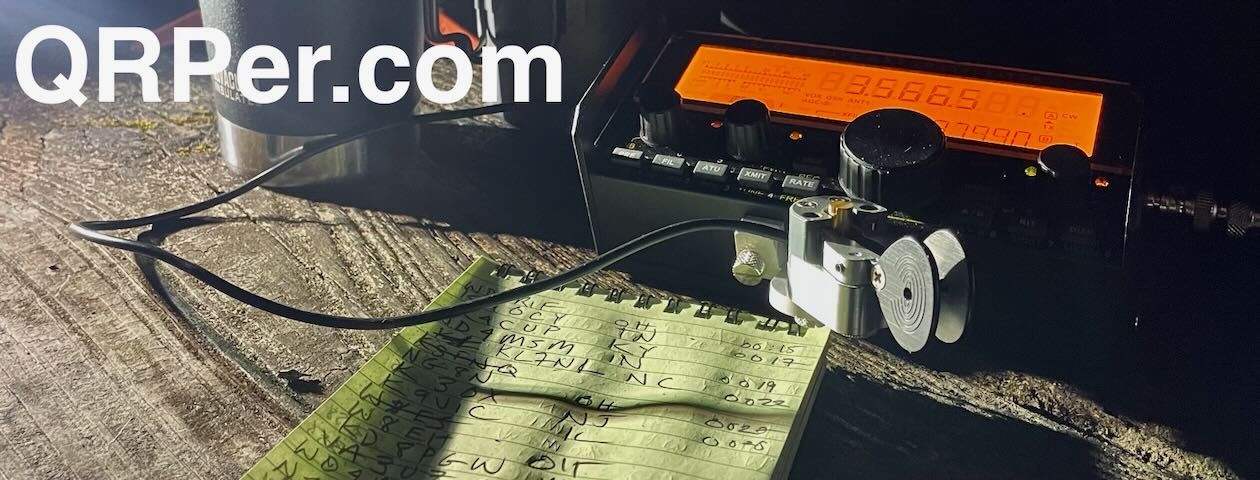
During the months of January and February 2023, I’ve given my Elecraft AX1 a thorough workout. As I mentioned in a previous post, I thought it might be fun to take the AX1 out on a good 30 days worth of activations.
Turns out, I’ve had such brief windows of opportunity to play radio recently, the AX1 and now AX2 have been valuable tools in my field kit. They are, no doubt, the quickest-to-deploy and most portable antennas in my collection.

If I only have a 20 minute window to squeeze in a quick park activation, the AX1 and AX2 make a valid POTA activation–with 10 logged contacts– a reality.
I originally purchased my Elecraft AX1 in the spring of 2020 and have used it extensively since then. In January 2023, I finally caved in and purchased the most recent addition to the AX family, the mono-band AX2.
Elecraft AX1 vs. AX2
 Since I’ve been publishing numerous field reports recently using the AX1 (with more to come) and since Elecraft has included both the AX1 and AX2 in their February 2023 Specials, I’ve received questions from readers asking:
Since I’ve been publishing numerous field reports recently using the AX1 (with more to come) and since Elecraft has included both the AX1 and AX2 in their February 2023 Specials, I’ve received questions from readers asking:
- “Should I buy an AX1 or AX2–?”
- and “If so, which one should I buy? What are the differences?”
At first, I simply pointed readers to the concise comparison guide that Elecraft publishes on their website (linked below).
I realize, though, that there are characteristics of each antenna that you might only discover after actually using them in the field.
I decided to make am unedited video–based on a few notes–not only describing the differences and similarities of the AX1 and AX2, but also if either would potentially benefit you as a field operator or traveler.
One quick note about resonance…
 One point I touch on in the video is that both the AX1 and AX2 antennas are designed to be mostly resonant on 20 meters.
One point I touch on in the video is that both the AX1 and AX2 antennas are designed to be mostly resonant on 20 meters.
Small verticals like the AX1 and AX2, that use coils to electrically “lengthen” the antenna, have a higher Q than, say, a large aperture quarter or half wave antenna. In practical terms, this means that the window of resonance is narrow and more fickle than, for example, an end-fed half-wave.
A lot of factors can affect the SWR on higher-Q antennas like the AX1/AX2 including:
- the type of terrain,
- height off the ground,
- length of counterpoise,
- configuration of counterpoise,
- and, most notably, the operator’s own body capacitance.
You may find that the AX2, for example, is natively resonant on 20 meters at one location, but isn’t at another location. This is quite normal. It’s also the reason why Elecraft states that both antennas are designed to be used with an ATU.
If you are pairing the AX1 or AX2 with a radio that doesn’t have an ATU (or you can’t use an external one), then you might consider making a simple capacity hat. Check out this field report and video where I paired the AX1 with the IC-705 and used a capacity hat to sort out the SWR.
Video
As with all of my videos, this one is unedited and commercial-free. If you’d like to skip through the video to the parts you might find most relevant, simply hover your mouse over the YouTube time line and click on the chapter indicated:
Click here to view on YouTube.
Another note here: I have no affiliation with Elecraft, but pushed this article and video to the front of the line to help those who are consider taking advantage of Elecraft’s AX1/AX2 February 2023 Package Deals.
I hope you find the video helpful. I’ll try to answer any other questions you might have in the comments of this post.
Resources
- Elecraft AX1 Manual
- AX1 Theory of Operation (by N6KR)
- Elecraft AX2 Manual
- Elecraft AX1/AX2 Comparison Chart
- YouTube Playlist of my AX1 activations
- Playlist of my AX2 activations (coming soon!)
Thank you
I hope you enjoyed this comparison video.
 I’d also like to send a special thanks to those of you who have been supporting the site and channel through Patreon and the Coffee Fund. While certainly not a requirement as my content will always be free, I really appreciate the support.
I’d also like to send a special thanks to those of you who have been supporting the site and channel through Patreon and the Coffee Fund. While certainly not a requirement as my content will always be free, I really appreciate the support.
Cheers & 72,
Thomas (K4SWL)
